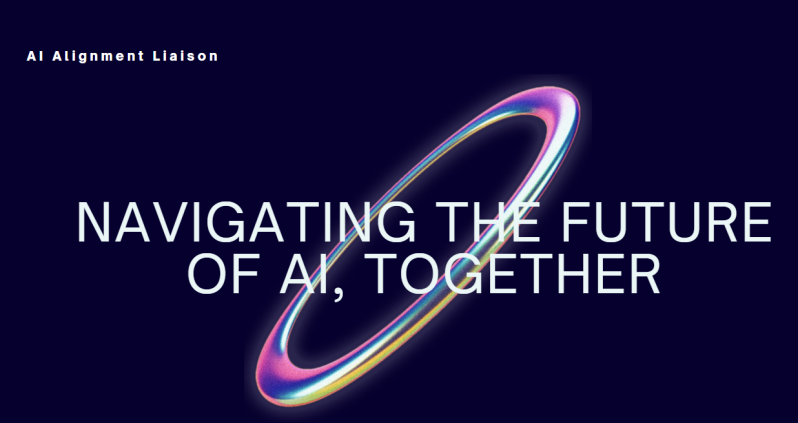
Welcome to the AI Alignment Liaison
The AI Alignment Liaison (AIAL) is an open-source initiative dedicated to guiding AI development teams in aligning their product development processes with a set of human values. Our goal is to make it easy to build trustworthy AI systems by integrating the principles that are important to you, such as of explainable artificial intelligence (XAI) and ethical AI, into AI product development workflows.
Mission Statement
The mission of the AI Alignment Liaison is to enable AI teams to align their AI development processes with human values. By leveraging generative AI and a human-in-the-loop approach, we help teams understand and integrate stakeholder values - spanning your core values, organizational goals, customer needs, and societal expectations. With these values setting the foundation, we provide structured guidance across every phase of AI development: from project ideation, all the way through engineering, validation, deployment, and AIOps.
We make responsible development accessible. You develop impactful AI that is trusted because it goes beyond complying with regulatory standards and your organization's governance structures (though it does that too). When you look at what you've built, you'll know that it truly reflects who you are and what you stand for.
What problem are we solving?
AI systems are increasingly shaping decision-making processes, yet they often pursue narrow objectives without accounting for their broader effects on people and society. This can result in unintended consequences and ethical dilemmas. The challenge lies in developing AI with processes that are aligned with human values and organizational goals while adhering to responsible practices.
Solution: Meet the AI Alignment Liaison
The AI Alignment Liaison addresses the above challenge by leveraging LLMs and a comprehensive database of responsible AI practices, combined with a deep contextual understanding of the product you are developing. We empower teams to build AI-powered products that are grounded in your values, comply with relevant regulations, and earn stakeholder trust. By embedding your core values throughout the development process, you can mitigate risks and thoughtfully shape your product's impact.
Frequently Asked Questions
Contact Us
Get In Touch
Sign up to stay informed about the AI Alignment Liaison! Receive updates, join our (future) newsletter, and learn about future developments.
Book a time with the founder, Ari Tal
Book a meeting with Ari Tal to discuss partnerships, collaborations, or how the AI Alignment Liaison can support your goals.
About The Founder
I'm Ari Tal, the person who began this initiative. It might not surprise you to hear that I have a passion for Responsible AI and Explainable AI (XAI). I like to open up an AI system to understand what the driving forces are behind how its model was formed and what its decision-making processes look like. Relying on a single metric to ensure your model is performing as expected does not feel satisfying to me.
What if your dataset is not sufficiently comprehensive? That could lead to a model that performs well for your data, but fails on unseen data or specific subpopulations - meaning you could have a model that is biased, perpetuates discrimination, or otherwise behaves unfairly.
How do you communicate model behavior with other members of your team? If you have an exceedingly complex model (as we often do when utilizing machine learning), communication about your efforts in AI development could be quite stifled. For example, your subject matter expert might never realize that the model you developed behaves entirely differently than they believe it should.
What do you do when your model has a problem or has unexpected behavior? Auditing a model, tracing how it makes its decisions, and debugging issues can be nearly impossible without tools to inspect model behavior.
These are just a few questions that come to mind when people ask me about my fascination with XAI.
Transparency paves the way for accountability and thus can potentially have downstream impacts on the fairness & equity of an AI system. That means that the ability to communicate the behavior of your models and how it reaches decisions can be a foundational necessity for responsible AI development and your ability to build trustworthy AI systems. I hope to enable you with the tools for such communication, whether you are working with a teammate to debug your model or explaining a prediction to an end user. This is why the heart of this website is a guide designed to help you select appropriate XAI techniques; so that you can cater your explanations to meet varied needs.